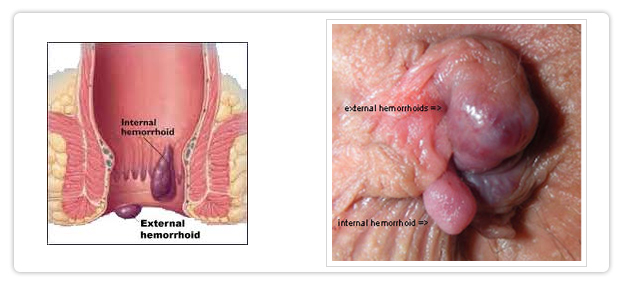Piles / Hemorrhoids
What are piles ?
- Piles (Arshas) are swollen and inflamed veins around the anus or in the lower rectum. Rectum is the last part of the large intestine leading to the anus.
- Piles are of two types viz. EXTERNAL PILES - which are located under the skin around the anus and INTERNAL PILES - develop in the lower rectum which may protrude or prolapse through the anus.
- According to the severity of the prolapse of the internal pile masses through anal aperture they are further divided into 4 grades also.
What are the symptoms of piles?
- bright red blood in the toilet bowl while passing stools
- non prolapsed internal piles are usually painless
- prolapsed piles often cause pain, discomfort and anal itching
- blood clots in external piles are called thrombosed piles which cause severe pain, bleeding and hard lump around the anus
How common are piles ?
- Hemorrhoids are very common in both men and women.
- About half of the population have hemorrhoids by age 50.
- Hemorrhoids are also common among pregnant women.
- The pressure of the fetus in the abdomen, as well as hormonal changes, cause the hemorrhoidal vessels to enlarge.
- These vessels are also placed under severe pressure during childbirth.
- For most women, however, hemorrhoids caused by pregnancy are a temporary problem.
What causes piles ?
- straining during bowel movement
- chronic constipation or diarrhoea
- sitting on the toilet for long periods of time
- a lack of fiber in the diet
- weakening of the connective tissue in the rectum and anus in old age
- pregnancy may cause piles by increasing the pressure in the abdomen
How are piles diagnosed ?
- on performing physical examination of anus and proctoscopy doctor will diagnose the condition
- sometimes patient s may have to undergo for sigmoidoscopy , colonoscopy and barium enema X-ray to rule out the other conditions
How are piles treated ?
AAHARA & VIHARA (DIET & LIFE STYLE MANAGEMENT) :
- simple diet and lifestyle changes often reduce the swelling of hemorrhoids and relieve hemorrhoid symptoms.
- eating a high-fiber diet can make stools softer and easier to pass, reducing the pressure on hemorrhoids caused by straining
- good sources of fiber are fruits, vegetables, and whole grains. These fibers cannot be digested by the human body but helps in improving digestion and preventing constipation
- regular intake of takra(butter milk), mooli (radish), soorana (yam) are very much useful in piles
- drinking six to eight 8 - ounce glasses of water or other non-alcoholic fluids each day
- sitting in a tub of warm water for 10 minutes several times a day
- exercising to prevent constipation
- not straining during bowel movements
MEDICAL MANAGEMENT :
- If the above measures fail to relieve the symptoms, medical treatments may be needed
- In mild to moderate conditions piles can be treated with the Ayurvedic medicines like Kankayana vati, Arshoghna vati, Bhallataka vati, Chitrakadi vati, Kanchanara guggulu, Triphala choorna,Avipathikara choorna, Kutajarishta, Abhayarishta etc., according to the constitution of the patient , prescribed by a qualified Ayurvedic doctor under his supervision
SPECIAL AYURVEDIC TECHNIQUES :
- When the medical management is not effective alone, the specialized ayurvedic procedures should be adopted
- medicated oil enema (maatra vasti) will reduce the size as well as the pain in uncomplicated piles
- sitz baths using special ayurvedic herbal powders
- external application of ksharas / tailas
- application of kshara sutra as a ligature which will give rise to the pile masses to falloff usually within 7 to 10 days.

